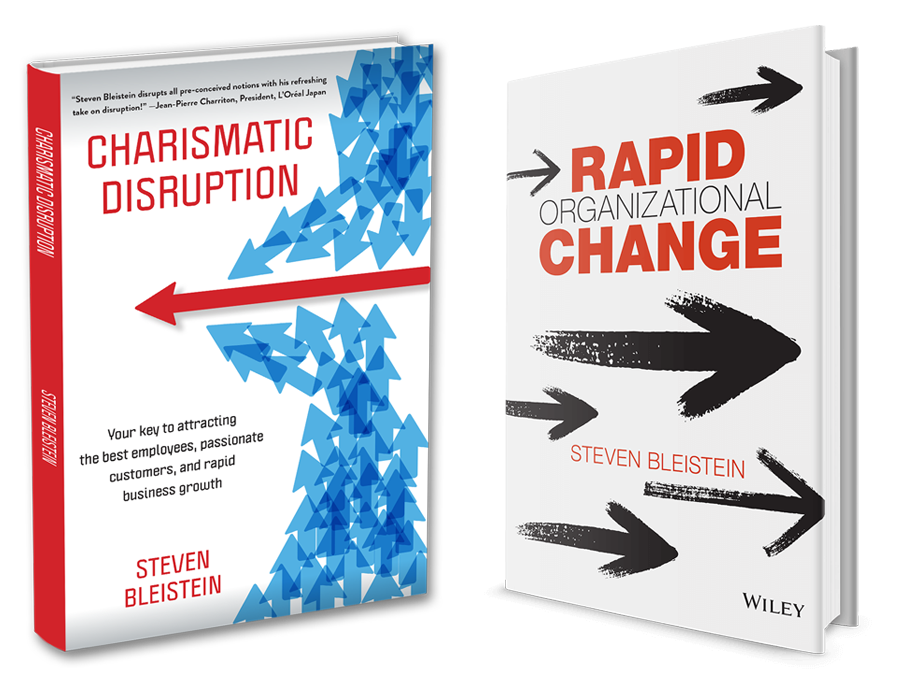Do you want to strengthen your business’s performance, and grow your business fast? Below are my top five pieces of advice that often run most counter to conventional practices I observe in companies in Japan and elsewhere in the world.
1. Stop Paying Heed to Employee Engagement Surveys. Walk the Floor Instead.
Pay no heed to employee engagement surveys, or better yet, don’t conduct them in the first place if this is up to you. Walk the floor, observe, and talk with people to understand employee engagement. The most successful leaders I know need no survey to know the level of engagement of their people.
Employee engagement surveys are a distraction. I have never witnessed an organization improve business performance based on the results of an employee engagement survey, despite the time, energy, and cost invested in conducting these surveys. Employee engagement surveys are designed for HR people to serve as an automated tool that requires no particular expertise or judgement, all while providing a veneer of putative scientific rigor. (I know of none that has ever been truly scientifically validated.)
The conclusions drawn from the results are frequently fallacious.
Yet it is no wonder. Employee engagement surveys treat all respondents as equal. As such, results are inherently skewed toward the mediocre, whose engagement is difficult to secure at best no matter what you say or do. It is engagement of the excellent, whom you want to retain, whose views ought to be weighted disproportionately. I have however witnessed no engagement survey that works in this way.
Poor engagement survey results do not necessarily indicate a problem. A temporary drop in business performance and attitude typically accompanies strategic change before these recover and improve beyond where they had been as the change begins to take hold and succeeds.
One CEO of the Japan office of a global European company had been in the midst of implementing badly needed strategic change when an engagement survey was conducted in his business as mandated by global HR. His bonus was actually docked because of a drop in engagement survey results compared to the previous year, a policy instituted by global HR so egregious I don’t know even where to begin!
The changes implemented did ultimately succeed. Business results improved dramatically the following year, and staff engagement rebounded. (No survey was necessary to see that!) This should come as no surprise. Apart from empowering employees to to create business results through individual work, nothing else enhances employee engagement like business success. Yet the damage had been done. The CEO had been penalized for doing his job right and well.
Similarly, positive engagement survey results don’t always indicate all is well, and often mask serious business problems. More than once I have witnessed consistently positive engagement survey results at companies whose businesses chronically underperform. An Italian CEO client of mine calls the phenomenon of employee satisfaction amidst an underperforming business “isola felice” in his native language, or in English, happy island mentality.
2. Leadership capability must be coached, and never “trained.”
You train animals. People you educate, and there is a difference. Whenever I ask an excellent business leader how he or she learned to lead, not one has ever told me thanks to a leadership training course. Rather, it is always a respected boss who mentored him or her or otherwise whom he or she chose to emulate.
Leadership training does not work. If you want to accelerate performance improvement and ensure ample leadership bench at all levels of your organization, make sure your mid-level and executive managers all know how to coach their direct reports, and do so routinely as part of their work.
Those being coached must be in a leadership role, even if with staff of just one. No theory, seminars, or case studies. Learning is through immediate application to real issues in the business. No one should ever have to “take time out for coaching.” Coaching is “time in the business.” Coaching should accelerate progress on real business at hand.
You can coach your own staff, assign mentor-coaches in your company, engage a top external expert to coach managers in how to coach their people, or all the above.
3. Sales capability must be coached, and never “trained.”
Sales capability cannot be trained. It must be coached, and the best person to coach sales staff is the sales manager. Don’t hire sales trainers to do the work that only a competent sales manager can and should do. Make frequent sales coaching part of a sales manager’s job.
Like leadership capability improvement above, rapid sales capability improvement is best achieved through immediate application of learning to business at hand. At one a company I know, a sales manager would have sales people take turns making phone calls to customers and prospects as others on the team listened in. Following the call, the group would discuss what worked, what didn’t and how to possibly do better.
At another company I know, a sales manager of the worst performing sales team instituted weekly role plays and rehearsals for upcoming meetings with customers and prospects. In less than a year, his became the top-performing team in the company!
Anyone with serious sales capability is already working in sales—including the best sales managers and staff already in your business—or otherwise running his or her own business.
It is thus ironic how often companies use “sales trainers” employed by training companies, whose own selling and marketing capabilities are so wanting they prefer to rely their employers to market and sell their services in exchange for meager wages that are inferior to the salaries of your own sales staff and managers.
Why on earth would you want to rely on such a “trainer” to help your people improve their sales results by millions if not tens or hundreds of millions of dollars?!
An HR director in a fit of snark once questioned what made me qualified to coach his company’s sales team after his CEO had hired me to do so in six-figure euro engagement.
“I sold your CEO, didn’t I.” I told him. “How many of your sales people are achieving similar results?” He walked away.
Make sure each of your sales managers know how to coach, and coach his or her sales staff regularly.
Augment coaching capability with external experts to coach your sales managers in how to coach their own teams first and foremost. Don’t outsource this to HR. Choose external experts yourself, and choose wisely!
4. If you want to attract and retain the excellent, you must fire the mediocre.
Excellent people are attracted to and want to work with other excellent people. One Japanese vice president I know fired three quarters of staff after taking over a division, all of whom she viewed as not up to her standards of excellence. Immediately, the best employees elsewhere in the company flocked to transfer to her division. This vice president had no trouble attracting and hiring additional external candidates, even though HR claimed it was impossible to find high calibre people in the market at the time.
An expat business person in Tokyo once lamented to me his company does not have the luxury for exacting standards in hiring, like those of “Google or Apple,” and insisted his company had no choice but to compromise standards if they were to hire anyone at all.
Google and Apple did not get to where they are today by compromising standards early on, I told him.
Hire, retain, and promote only the excellent. Fire the mediocre without compunction.
5. Company culture is yours to create, no matter the country in which you operate.
An expat CEO newly arrived in Japan asked for my help in coaching her to adapt her leadership style to local Japanese corporate culture, even though she knew the existing culture in her company was not serving the best interests of the business.
“The most successful CEOs I know adapt their company’s culture to their leadership style, not the other way around, and you should do the same!” I told her. And so she did.
Leaders create company culture, not countries. You can create whatever culture you want within the walls of your own business, no matter how supposedly different from the culture outside, as long as you do things right.
If you look at any highly successful business anywhere in the world, you will find that its company culture defies what others consider cultural norms. Apple’s corporate culture is an outlier in the United States, just as Rakuten Ichiba’s corporate culture is an outlier in Japan.
There is no need to adapt to whatever culture happens to be in the environment. Use your cultural sensitivity and understanding as tools to transform culture rather than conform to it. Make your company a successful outlier.
So what advice to you have for other business leaders? Drop me a line if you care to share.



One Response
“Walk the floor instead” – excellent point, and it reminds me of a conversation I had with a leader last year. He had this philosophy, “Leadership by loitering” and you could tell that it worked for him (his level of influence, strong relationships, feeling what was going on in the workplace).
No more employee engagement surveys, please! Oh, and I’ve seen a new KPI emerge in the last few months: # of posts on social media / intranet (Yammer channels). Insane.